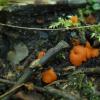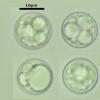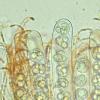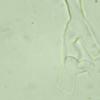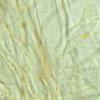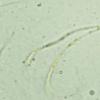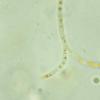
27-01-2013 18:58
 Chris Yeates
Chris Yeates
Bonsoir tousfound on an attached Quercus twig, gro

27-01-2013 19:26
 Rodríguez Borja
Rodríguez Borja
HelloToday´s morning I have found this Cosmospo

26-01-2013 15:43
Bonjour à tous,Voici un indéterminé restant de

20-01-2013 19:18
 Gilles Corriol
Gilles Corriol
Bonjour à tous,Mon Urceolella semble être dans u

26-01-2013 08:05
Nina FilippovaI gues that "mollisia knowledge" is a matter of

24-01-2013 10:12
Reza ShaianDear friends, I collected a Helvella specimen that

25-01-2013 08:44
Stefan BlaserHello everybody Can someone give me some advice o

24-01-2013 23:41
Hello!Pezizales this was collected in cow feces, s
I thought the species might be Pulvinula convexella (= P. constellatio), but the spores are fairly small compared to some sources (although there seems to be broad variety between different sources). I'm thinking about the possibility of P. miltina.
I measured 15 spores from a spore print in water and the diameter was 14-15 microns.
There are many fresh expert approved sightings of P. miltina in the Danish svampe.databasen.org. In GBIF there are sightings from European countries and Australia and New Zealand. But I also found a comment by Nicolas Van Vooren on this forum from few years ago that P. miltina is an Australian species and possibly endemic.
So has there been some new study that has cleared this matter or is there still confusion about this species?
Gilbert

does anywhere a key about this genus exist? - a key that contains most taxa and is to some extens "modern"?
Best, Lothar
Have you tried if the asci have croziers?
It is a very important character in this genus.
Enrique
Gilbert

I checked the article and this doesn't seem to fit any species fully. P. convexella and P. miltina seem to be closest. The former should have bigger spores and asci and the latter shouldn't have croziers and should have an abrupt base (however the article did mention that in some specimens of P. miltina there were occasional croziers).
So, still confused :).
I think Pulvinula miltina, described with or without croziers, fits well with your harvest (YAO & SPOONER, 1996),(RIFAI,1968).
I would advise you to keep looking at the base of the asci to try to see if, it looks like in all your photos, the asci have croziers.
